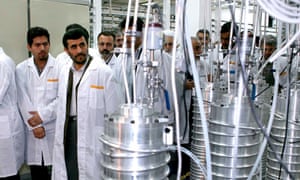EVOLUTION’S DEATH BY A THOUSAND CUTS? NEW GENETIC STUDY
Mr.
L.G. sent this article, and given my blog a couple of weeks ago about
"Oannes the Octopus" and the theory that some scientists are now
advancing, that cephalopods may have originated off this planet, this
new study is even more provocative, and, let it be noted,
raises implications for the octopus study. Indeed, it seems that some
aspects of evolutionary theory might be dying the death of a thousand
cuts. And, for the record, I've never been one of those who subscribes
to various fundamentalisms - Christian or evolutionary - about the age
of the Earth or the origins of life on it; both seem to be to be a
patchwork quilt of assumptions and pieced-over cloth, such that in both
cases the current quilt little resembles the original because they've
been "added to" or "corrected" so many times.
So,
one may "color me skeptical" about this new study as well, but, for our
trademark high octane speculation, it does present certain implications
that are, indeed, rather stunning:
The
essence of the new study resembles, so far as I can tell, the type of
mitochondrial DNA research of Oxford biologist Dr. Brian Sykes, who
traced mitochondrial DNA back to identify certain "clan haplogroups"
sharing common "clan mothers." In the case of the current study,
however, this approach was used on a variety of species on Earth, and
the result is... well, "challenging" for standard evolutionary
confessional orthodoxy, for consider the final paragraphs of the
article:
In analyzing the COI of 100,000 species, Stoeckle and Thaler arrived at the conclusion that most animals appeared simultaneously. They found that the neutral mutation across species were not as varied as expected. Neutral mutation refers to the slight DNA changes that occur across generations. They can be compared to tree rings because they can tell how old a certain specie or individual is.As to how that could have happened, it's unclear. A likely possibility is the occurrence of a sudden event that caused large-scale environmental trauma and wiped out majority of the Earth's species."Viruses, ice ages, successful new competitors, loss of prey — all these may cause periods when the population of an animal drops sharply," explains Jesse Ausubel, director of the Program for the Human Environment.Such times give rise to sweeping genetic changes across the planet, causing new species to appear. However, the last time such an occurrence took place was 65 million years ago, when an asteroid hit the Earth and killed off the dinosaurs and half of all other species on the planet.(Emphasis added)
Worse still, there's this:
More specifically, they found out that 9 out of 10 animal species on the planet came to being at the same time as humans did some 100,000 to 200,000 years ago. (Emphasis added)
So
by the article's own framing of the question, some sort of "event"
occurred 65,000,000 years ago, and another approximately 200,000 years
ago, and while the 65,000,000 years ago date is commonly thought to have
been the result of an asteroid impact (as the article notes), the
sudden appearance of more modern species ca. 200,000 years ago remains
(here comes that word), a "mystery."
As
one might imagine, there will be a certain segment of the population
that will jump for joy and pronounce this finding the end of Mr. Darwin
and his church. And though I'm not a member or adherent of that faith, I
do at least respect it enough to give it credit for having constructed a
relatively effective and consistent model that has been able to cope
with a mountain of data rather well. Like all scientific theories, it
has its problems, and as such it has had its share of Domingo Guzmans
"defending the faith" and "ignoring contraindications" and persecuting
anyone questioning it; but it has also had its share of honest clergy
willing to admit to the problem areas. But all in all, the model has
served fairly well, and, lest we forget, it was not burning the
opposition at the stake.
But as in
contemporary physics, a number of recent studies are raising some
serious questions and implications for the standard narratives, and this
story definitely strikes me as one of them. For one thing, the
appearance of other life along with the currently held position that
human life begins at roughly the same time, raises questions and
implications for all those ancient texts that I occasionally write about
in my books or blog about here. I find it terribly interesting, for
example, that this dating roughly approximates the dates of the Sumerian
Kings' List, where supposedly "kingship" was "lowered from heaven" ca.
250,000 years ago. That statement, of course, has been subject to the
usual academic scrutiny as well, and most academics would write it off
as an exaggeration, a kind of Mesopotamian "science fiction."
Nonetheless, the assertion is there, along with all those
Mesopotamian stories about some sort of "genetic engineering" project
that brought modern man (or something close) into existence by the
mingling of "the gods" with some distant member of the genus homo
already present on this planet.
Consequently, perhaps - and let me repeat that word - perhaps we are looking at the beginnings of some sort of loose confirmation of those stories. The coincidence in this case is
rather though-provoking, but for confirmation of the stories,
scientists would have to be able to look at all that massive mountain of
data to see if, perhaps (that word again) there may be evidence of some
"deliberate genetic tinkering" in the distant past, or if, like Oannes
the Octopus, there may be indications of a "seeding" from some place
else off this planet in an example of "panspermia" theory.
Bu
howsoever one parses this story, one thing, I think, is clear if the
story is true and if the findings and interpretation of the study hold
up under scrutiny, because if that should turn out to be the case, then, yes, this is a very serious, and very deep, cut. https://gizadeathstar.com/2018/06/evolutions-death-by-a-thousand-cuts-new-genetic-study/











